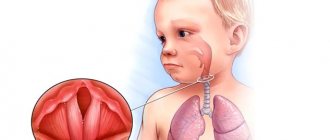July 30, 2020
To talk about local inflammation, you must first understand what lymphadenitis is in general. This is an inflammatory process in the lymph nodes, sometimes accompanied by suppuration
To talk about local inflammation, you must first understand what lymphadenitis is in general. This is an inflammatory process in the lymph nodes, sometimes accompanied by suppuration. It manifests itself through enlargement of one or more lymph nodes and can occur in several regions of the body at once. Clinical signs of the disease depend on the form and type of lymphadenitis: acute or chronic, regional (damage to lymph nodes of one anatomical group) and generalized (involvement of several groups of lymph nodes), serous, purulent, gangrenous, hemorrhagic, phlegmonous.
In the body, lymph nodes create a protective barrier against viruses, infections, cancer cells, participate in the formation of lymphocytes (special cells that destroy foreign microorganisms) and the production of phagocytes, antibodies (immune cells), participate in digestion and metabolic processes, distribute intercellular fluid between body tissues and lymph.
Normally, the lymph nodes are not palpable or are palpated in the form of elastic, small-sized formations that are not fused with adjacent tissues or with each other. Depending on the prevalence, the following types of lymphadenitis should be distinguished:
- local - enlargement of one lymph node in one of the areas (single cervical, supraclavicular lymph nodes);
- regional - enlargement of several lymph nodes in one or two adjacent areas (supraclavicular and axillary, supraclavicular and cervical, occipital and submandibular lymph nodes, etc.);
- generalized - enlargement of lymph nodes in three or more areas (cervical, supraclavicular, axillary, inguinal, etc.).
With axillary lymphadenitis, enlarged lymph nodes in the armpit are palpated. Symptoms of axillary lymphadenitis:
- Enlarged lymph nodes
- Painful sensations when palpating the affected area, turning the body, or moving
- Inflamed nodes are fused together with each other and adjacent tissues into one dense conglomerate
- The skin over the inflamed lymph nodes is hyperemic
- Symptoms of body intoxication appear - fever, weakness, headache, lack of appetite, feeling weak, muscle pain
Often the disease is accompanied by symptoms of the underlying disease; in addition, the patient may be bothered by:
- night sweats;
- weight loss;
- prolonged increase in body temperature;
- frequent recurrent upper respiratory tract infections;
- pathological changes on a chest x-ray;
- hepatomegaly;
- splenomegaly.
Diagnostics
The difficulties of differential diagnosis for local lymphadenopathy lie in identifying a local inflammatory process of an infectious (usually) or non-infectious nature. Lymphatic vessels supplying the upper extremities of the body, the chest wall and the mammary glands pass through the axillary lymph nodes, and as a result, the inflammatory process in this part of the body can provoke enlargement of the lymph nodes. Much less often, the pathogen enters the lymph node and directly through the skin of the axillary region when its integrity is violated. Possible causes of axillary lymphadenitis:
- panaritiums;
- erysipelas of the upper limb;
- phlegmon of soft tissues of the hand, forearm and shoulder;
- osteomyelitis of the bones of the upper limb;
- boils of the same localization;
- purulent mastitis;
- cat scratch disease;
- lymphoma;
- mammary cancer;
- melanoma.
Bacterial axillary lymphadenitis is caused by the following infectious agents:
- staphylococci and streptococci;
- Proteus wand;
- coli;
- enterobacteria
In order to establish the correct diagnosis, it is necessary to take into account the anamnesis and all clinical indications. Diagnosis is usually made using puncture biopsy of lymph nodes; if necessary, lymph node excision can be performed, followed by histological analysis. Before making a diagnosis, a number of examinations are carried out:
- lymphoscintigraphy;
- computed tomography;
- radiopaque lymphography.
Often a patient has to go through several specialists at once to verify the diagnosis, from a general practitioner to an infectious disease specialist, a venereologist, an oncologist and a therapist. The examination begins with palpation (palpation) of the areas where the nodes are located. If primary signs of lymphadenitis are detected, an ultrasound examination is first prescribed. Differential diagnosis should be carried out with systemic blood diseases (leukemia, lymphogranulomatosis), storage diseases (Gaucher, Niemann-Pick), immunopathological diseases (chronic granulomatous disease, juvenile rheumatoid arthritis, systemic lupus erythematosus, dermatomyositis, etc.), tumor metastases. Sometimes it is necessary to carry out a differential diagnosis with other surgical diseases, for example, breast cancer can metastasize to nearby (axillary lymph nodes) and then treatment will be aimed at the underlying disease.
Lymphadenitis
An acute nonspecific process manifests itself with pain in regional lymph nodes and an increase in their size. In the catarrhal and hyperplastic form, enlarged nodes can be easily palpated, their pain is insignificant, and general disorders are mild or absent. Lymphadenitis often occurs with the involvement of lymphatic vessels - lymphangitis.
In case of suppuration, the node becomes dense and painful, general intoxication develops - fever, loss of appetite, weakness, headache. Local phenomena increase - hyperemia and swelling in the area of the affected node, the contours of the lymph node become unclear due to periadenitis. The patient is forced to spare the affected area, since the pain intensifies with movement. Quite soon, purulent melting of the lymph node occurs and fluctuation becomes noticeable in the area of infiltration.
If the formed abscess is not opened in time, pus may leak out or into surrounding tissues. In the latter case, adenophlegmon develops, which is characterized by a diffuse, dense and painful infiltrate with individual areas of softening. In the putrefactive form of lymphadenitis, gas crepitus (crunching) is felt when palpating the node. During destructive processes, general disorders progress - fever, tachycardia, and intoxication increase.
Lymphadenitis in children occurs rapidly with high fever, malaise, loss of appetite, and sleep disturbances. Possible serious complications may include generalization of infection with the development of sepsis.
In chronic nonspecific lymphadenitis, the lymph nodes are enlarged, slightly painful, dense, and not fused with the surrounding tissues. The outcome of chronic lymphadenitis is wrinkling of the nodes due to the replacement of lymphoid tissue with connective tissue. Sometimes the proliferation of connective tissue causes a disorder of lymph circulation: edema, lymphostasis, elephantiasis.
Specific gonorrheal lymphadenitis is characterized by enlargement and severe tenderness of the inguinal lymph nodes. Tuberculous lymphadenitis occurs with high fever, severe intoxication, periadenitis, and often necrotic changes in nodes. Lymphadenitis in syphilis is characterized by a unilateral moderate enlargement of the chain of lymph nodes, their lack of adhesion to each other and to the skin. With syphilitic lymphadenitis, suppuration of the lymph nodes never occurs.
Treatment of axillary lymphadenitis
Treatment tactics for axillary lymphadenitis depend on the form and cause of the disease. In most cases, lymphadenitis does not require special therapy and goes away on its own after the underlying disease is eliminated. If the process is complicated by suppuration, then the treatment tactics completely change.
General recommendations: maintain rest, immobilize the affected area (do not rub or injure the affected lymph nodes), proper nutrition, take painkillers, anti-inflammatory medications. Therapy for acute axillary lymphadenitis depends entirely on the stage of the disease. Conservative treatment is used for the initial stages: UHF therapy, sanitation of the source of infection (opening of abscesses, leaks, cellulitis, drainage of the abscess), antibiotic therapy taking into account the sensitivity of the microbial flora in the main focus.
Surgical intervention is necessary for purulent axillary lymphadenitis: adenophlegmon, abscesses are opened, pus is removed, and the wound is drained. It happens that a biopsy confirms the presence of a tumor process - benign or malignant. Treatment may include radiation and chemotherapy. In the case of lymphadenitis, as in the presence of any other diseases, it is extremely dangerous to self-medicate.
Back to articles
Description of the disease, types
Lymphadenitis is a condition characterized by enlargement of one or more lymph nodes. Occurs against the background of an infectious, oncological or inflammatory disease.
Enlarged lymph nodes can occur in one area of the body or simultaneously in different parts. Based on this feature, three types of pathology are distinguished: single, total or regional lymphadenitis.
Depending on the cause, inflammation can be:
- specific, that is, caused by a specific type of pathogen - tuberculosis bacillus, gonococcus, Treponema pallidum, which causes syphilis, or Yersinia, which causes plague;
- nonspecific, that is, caused by pathogenic microflora, which can enter the lymphatic system from external and internal purulent foci. Lymphadenitis can be caused by staphylococcus or streptococcus that enters the lymph node through the bloodstream.
If the wounds are small and the pathological process occurs locally, then a diagnosis of “regional lymphadenitis” is made, which arose as an inflammatory reaction in nearby lymph nodes. If the infection is general or large areas of the body are affected, then lymphadenitis can occur throughout the body.
Lymphadenitis accompanies infectious processes in the oropharynx with sore throat, inflammation of the adenoids, influenza infection, otitis media, scarlet fever. Also, hypertrophy of the lymph nodes accompanies rubella, diphtheria and mumps.
The main localization is the lymph nodes in the armpits, on the neck and head, in the groin, as well as the popliteal and elbow. Inflammation of the abdominal nodes located in the depths is called mesadenitis.
The disease is characterized by symptoms of an inflammatory process: headache, fever, weakness.
Treatment and prevention
The doctor may prescribe a conservative treatment regimen or surgery in severe cases. The goal of treatment is to eliminate the source of inflammation. For effective treatment of lymphadenitis, it is necessary to contact a specialist in this field.
It is easier to prevent any disease than to try long and hard to get rid of it. To prevent lymphadenitis, it is necessary to promptly treat concomitant diseases, including opening boils and preventing wounds from festering.
How to recognize lymphadenitis?
The inflammation initially develops asymptomatically. But soon, characteristic signs of lymphadenitis appear:
- enlarged lymph nodes under the lower jaw, pain when touched;
- redness of the skin at the site of inflammation;
- swelling;
- attacks of throbbing pain;
- insomnia;
- difficulty swallowing;
- heat;
- weakness;
- increase in the level of leukocytes in the blood.
Of course, these symptoms do not appear in 1 day. And many people ignore the appearance of mild pain. But if you do not consult a doctor at this time, the picture of the disease will become obvious in just 3 days. The lymph nodes will become inflamed, swollen, and the edema will gradually cover the entire submandibular surface. Patients become lethargic, complain of fatigue, weakness, and high fever. They cannot eat because the inflammation prevents them from opening their mouth normally and sleeping due to pain and fever.
If you continue to ignore the symptoms and postpone a visit to the doctor, the inflammation will become purulent, which will result in blue swelling and increased pain. To prevent this from happening, you should contact a dental surgeon at the DaVinci aesthetic dentistry studio.
The sooner the patient contacts the dentist, the easier it is to eliminate the infection. But many people themselves try to diagnose themselves and choose treatment, which leads to the spread of inflammation and aggravation of the above symptoms. Treating the disease in advanced stages is more difficult and takes longer.
Diagnosis of lymphadenitis
First of all, the specialist will examine the lymph nodes by palpation. In healthy people, they are quite soft, easily displaceable relative to neighboring tissues, absolutely painless and not enlarged - in patients of normal build, the lymph nodes are generally difficult to palpate; it’s a different matter for thin patients, especially children and adolescents. Further, depending on the results of the examination, a decision will be made on the use of other diagnostic measures, in particular, the following may be required:
- a general blood test showing changes in its composition.
In this case, the presence of tumor processes may be suspected - and then a biopsy of the node will have to be performed, i.e. sampling of its tissue for histological examination;
- HIV test;
- Ultrasound of peripheral lymph nodes and abdominal organs (especially the spleen and liver);
- CT scan;
- examination by an ENT doctor;
a diagnostic and therapeutic operation is carried out in the event of a surgical pathology: opening and draining the resulting cavity, as well as examining adjacent organs and tissues for the presence of purulent wounds and abscesses;
in pediatric patients, the first step is to exclude (or confirm) Quincke's edema - a life-threatening allergic reaction, as well as congenital cysts and tumors in the neck area, which are very similar to enlarged lymph nodes;
skin allergy tests, microscopic examinations of sputum and blood, x-rays, recording contact with tuberculosis patients - all these manipulations are carried out if specific lymphadenitis is detected;
lymphadenitis in the groin area requires excluding the presence of an inguinal hernia, as well as conducting a number of studies in order to confirm (exclude) the presence of sexually transmitted diseases.
Therapy
Lymphadenitis is treated in an adult using traditional methods. These include:
- bed rest,
- treatment with antibiotics,
- UHF,
- electrophoresis,
- galvanization,
- no impact on damaged areas of the body,
- vitamin complexes.
Among other things, they may also prescribe special products and ointments.
Importance is attached to lymphadenitis treatment with antibiotics . Before prescribing this type of treatment, the specialist is obliged to conduct an examination to determine whether harmful organisms have reacted to such drugs. It is clear that the doctor prescribes to the patient those medications to which the pathogens give a reaction.
When it comes to urticaria lymphadenitis with purulent processes, then to cure it is necessary to open the purulent pimples and remove all the liquid from them.
If a tuberculosis bacillus is detected, the patient is transferred to hospital treatment. Within the clinical center, strict monitoring of the patient’s condition is carried out, as well as his isolation from healthy people to prevent the development of infection.
treatment of lymphadenitis
To treat chronic lymphadenitis, it is necessary to detect and eliminate the main factor of lymph node compaction. Only this will allow you to get rid of the pathology 100% forever.
Diagnostic methods
neck lymphadenitis detected ? During the examination, the doctor presses on the lymph nodes to determine the cause. A general blood test will provide the necessary information about the course of pathological processes, which are characterized by an increase in the number of lymphocytes.
If the diagnosis is established without the presence of certain complications, the doctor immediately prescribes therapy. However, in cases where the doctor notes disturbances in other systems, it is necessary to conduct additional examinations, which include:
- general and biochemical blood test,
- histology examination,
- x-ray of the chest area,
- Ultrasound of the abdominal cavity,
- immune system examinations and blood tests to check for hepatitis.
In any case, consultation with a specialist is mandatory. An exacerbation of the disease can occur at any time.
Symptoms
The main symptoms that indicate the presence of lymphadenitis are the following: increased body temperature, insomnia, fatigue, nervous system disorders; indifference to life, poisoning, etc.
In the initial stage of acute lymphadenitis, thickening of the lymph nodes can be observed. When pressed, discomfort and pain occur. Such signs are considered dangerous, so patients should immediately consult a doctor for advice. Otherwise, further development of a dangerous disease may occur.
Symptoms of the chronic form of the studied lymphadenitis in adults and children include: hardening of the lymph nodes, high body temperature, weakness and fatigue, insomnia, pain when pressing the lymph nodes.
At the stage of the chronic form of the disease, the symptoms become somewhat muted. This is due to the fact that the body reduces the number of mechanisms spent on fighting pathology. As a result, the body is poisoned. Purulent inflammation leads to an increase in the number of external symptoms of the disease, which leads to exacerbation. Purulent inflammation is indicated by intense pain and swelling of the lymph nodes. A similar condition is life-threatening and requires urgent intervention.
lymphadenitis symptoms










